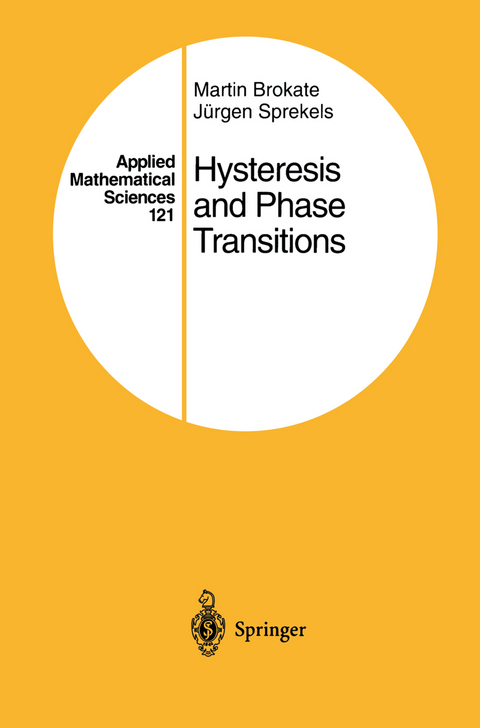
Hysteresis and Phase Transitions
Springer-Verlag New York Inc.
978-1-4612-8478-9 (ISBN)
1. Some Mathematical Tools.- 1.1 Measure and Integration.- 1.2 Function Spaces.- 1.3 Nonlinear Equations.- 1.4 Ordinary Differential Equations.- 2. Hysteresis Operators.- 2.1 Basic Examples.- 2.2 General Hysteresis Operators.- 2.3 The Play Operator.- 2.4 Hysteresis Operators of Preisach Type.- 2.5 Hysteresis Potentials and Energy Dissipation.- 2.6 Hysteresis Counting and Damage.- 2.7 Characterization of Preisach Type Operators.- 2.8 Hysteresis Loops in the Prandtl Model.- 2.9 Hysteresis Loops in the Preisach Model.- 2.10 Composition of Preisach Type Operators.- 2.11 Inverse and Implicit Hysteresis Operators.- 2.12 Hysteresis Count and Damage, Part II.- 3. Hysteresis and Differential Equations.- 3.1 Hysteresis in Ordinary Differential Equations.- 3.2 Auxiliary Imbedding Results.- 3.3 The Heat Equation with Hysteresis.- 3.4 A Convexity Inequality.- 3.5 The Wave Equation with Hysteresis.- 4. Phase Transitions and Hysteresis.- 4.1 Thermodynamic Notions and Relations.- 4.2 Phase Transitions and Order Parameters.- 4.3 Landau and Devonshire Free Energies.- 4.4 Ginzburg Theory and Phase Field Models.- 5. Hysteresis Effects in Shape Memory Alloys.- 5.1 Phenomenology and Falk’s Model.- 5.2 Well-Posedness for Falk’s Model.- 5.3 Numerical Approximation.- 5.4 Complementary Remarks.- 6. Phase Field Models With Non-Conserving Kinetics.- 6.1 Auxiliary Results from Linear Elliptic and Parabolic Theory.- 6.2 Well-Posedness of the Caginalp Model.- 6.3 Well-Posedness of the Penrose-Fife Model.- 6.4 Complementary Remarks.- 7. Phase Field Models With Conserved Order Parameters.- 7.1 Well-Posedness of the Caginalp Model.- 7.2 Well-Posedness of the Penrose-Fife Model.- 8. Phase Transitions in Eutectoid Carbon Steels.- 8.1 Phenomenology of the Phase Transitions.- 8.2 The MathematicalModel.- 8.3 Well-Posedness of the Model.- 8.4 The Jominy Test: A Numerical Study.
| Reihe/Serie | Applied Mathematical Sciences ; 121 |
|---|---|
| Zusatzinfo | X, 358 p. |
| Verlagsort | New York, NY |
| Sprache | englisch |
| Maße | 155 x 235 mm |
| Themenwelt | Mathematik / Informatik ► Mathematik ► Analysis |
| Naturwissenschaften ► Physik / Astronomie ► Mechanik | |
| ISBN-10 | 1-4612-8478-3 / 1461284783 |
| ISBN-13 | 978-1-4612-8478-9 / 9781461284789 |
| Zustand | Neuware |
| Haben Sie eine Frage zum Produkt? |
aus dem Bereich


